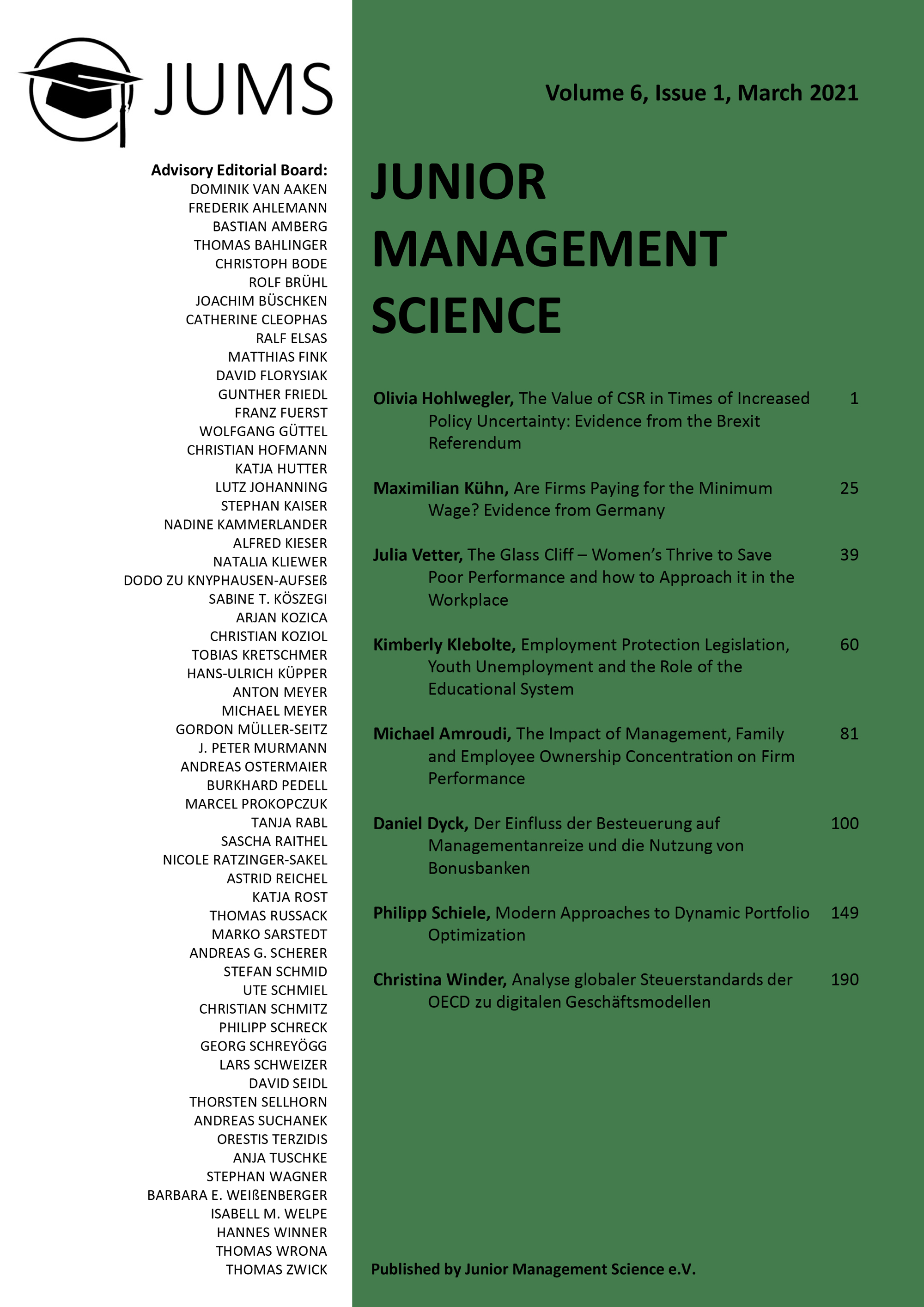Abstract
Research on the effect of employment protection legislation (EPL) on unemployment is extensive. However, results are ambiguous and were not able to show a clear pattern of how EPL is affecting labour market outcomes. Recent research has focussed on the effect of EPL on youth unemployment, linking higher protection to higher unemployment among young labour market entrants compared to their adult peers. Moreover, it is argued that EPL might not have a universal effect on youth unemployment but must be considered in an interplay of institutional factors, including vocational specificity. Based on these findings, this thesis provides a comprehensive assessment of the effects of EPL and vocational specificity on the labour market chances of young people compared to adults. As young people in particular often find their way into the labour market via temporary contracts, it is distinguished between EPL for regular and temporary contracts. A total of 28 OECD countries are examined from 1985 to 2013 using OECD data. In line with previous research, there appear to be no main effects of regular EPL or the vocational specificity on its own on the level of youth unemployment or the youth-to-adult unemployment ratio, but there is a positive effect of temporary EPL on the youth-to-adult ratio. This suggests that especially for young people deregulation of these contracts – contrary to the usual theoretical assumptions – can have a positive effect on their labour market situation.
Keywords: Labour market; EPL; unemployment; youth; education.

Dieses Werk steht unter der Lizenz Creative Commons Namensnennung 4.0 International.
Copyright (c) 2021 Junior Management Science e.V.

